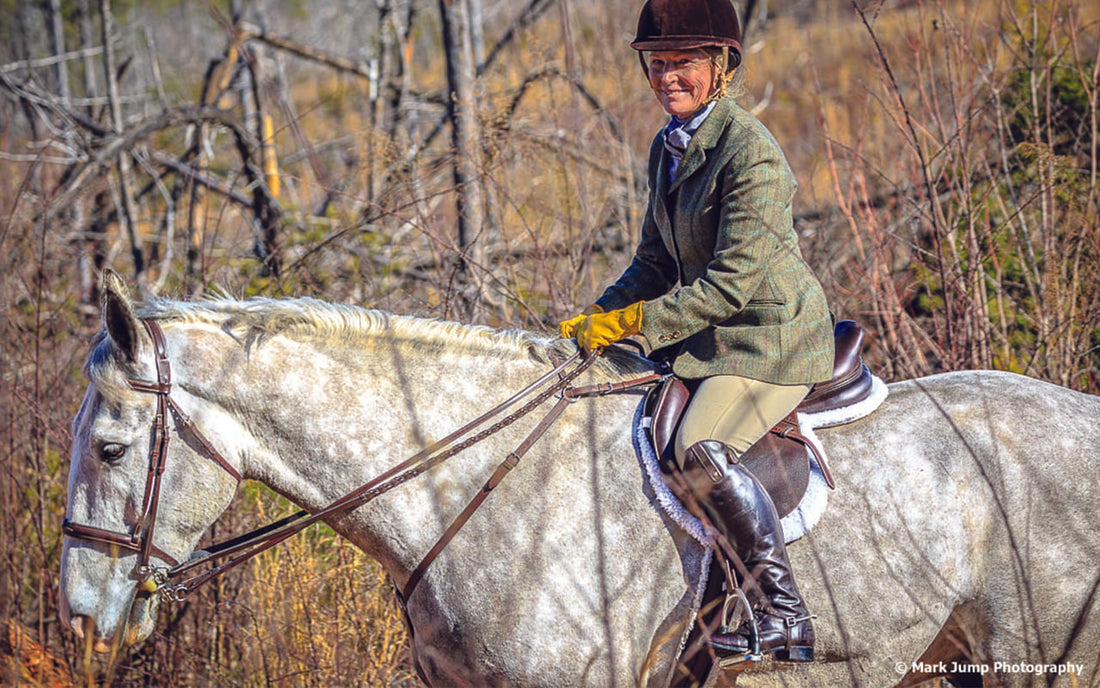
Pelham Bits: Everything You Need To Know
Michelle DrumOne of the most important decisions you’ll make for your horse is the type of bit you use. A bit is an essential tool for communicating with your horse, and the type of bit you choose can impact how your horse performs as well as the comfort your horse experiences. In this article, we’ll explore Pelham horse bits, including when to use them, the varieties available, and how to choose the right one for your horse. We’ll also share some great options that our customers love.
Horse Bits 101
A bit is a communication device between the rider and the horse. It’s a piece of metal that sits in the horse’s mouth between the incisors and molars (often referred to as “the bars” of the mouth), where there are no teeth, giving the rider control of the horse’s head.
There are different types of bits, the two primary types being snaffle bits and curb bits. Snaffle bits operate with a direct pull from the reins, which attach directly to the mouthpiece. Curb bits work through rotation or leverage, where the reins are attached to a shank, and a curb strap is used under the horse’s chin. The shanks then apply pressure when the rider pulls back on the reins, creating leverage. Snaffle bits are more commonly used, as curb bits have the potential to injure a horse if used incorrectly. However, curb bits do enable a rider to convey more nuanced directions to their horse.
What Is a Pelham Bit?
A Pelham bit is a type of horse bit that has elements of both a snaffle bit and a curb bit. It has a set of curb reins and a set of snaffle reins and works as a Weymouth. The bit has a mouthpiece and shanks, with a curb chain that applies leverage to the horse’s poll while making sure the bit doesn’t rotate too far. It also has a bit ring on either side of the mouthpiece, like a snaffle bit. Pelham bits can have a jointed mouthpiece or a solid one (mullen). Pelham bits are designed to be used by an educated hand or under professional supervision.
A pelham bit combines the benefits of both a snaffle and a curb bit into one mouthpiece. Some say it is similar to using a double bridle, however that is not 100% accurate. When using a double bridle, the snaffle bit and the curb bit work independently from one another, offering a high level of communication with your horse.
When To Use a Pelham Bit
Determining the type of bit you will use with your horse is an important decision that will depend on your — and your horse’s — experience. You don’t want to risk injuring your horse, so before you use a Pelham or a curb bit, you want to be sure you have the necessary hand control. Additionally, horses need to learn how to respond to bit cues when using this type of bit, so you’ll want to introduce it to your horse gradually.
When using a pelham bit, the snaffle and the curb are one mouthpiece and work together with the rider's hands. In the classic setting, this bit utilizes two reins. The snaffle rein is a direct connection to the horse's mouth for communication allowing the rider to communicate and feel the response from the horse. The second reign is known as a curb or pelham rein, this rein is a direct connection to the lower shank of the pelham. This rein offers the rider leverage through the poll and pressure under the chin. When pairing both of these elements together, the rider’s hand can engage the curb as necessary while riding.
Pelham bits are sometimes used by hunters, jumpers, and eventers, but they are not allowed in dressage. Some view them as harsh bits, given the curb bit action that they use. However, when used correctly and with double reins, they can be very humane. The primary contact will be through the snaffle rein, and it’s a good idea to use special reins where the curb set has a narrower cut. The snaffle rein is typically a traditional laced leather rein, while the curb rein is smooth and slightly more narrow so the rider can feel the difference while riding and make necessary adjustments without looking down. Standard reins have a similar hand-feel when they are doubled up, which makes it more challenging to manage a Pelham bit correctly.
Pelham reins are held in an unexpected way. When riding with double reins, the snaffle rein is carried under the pinky, while the curb rein is held between the pinky and the index finger. This method assists the rider in creating excessive pressure on the curb rein. While using double reins, the snaffle rein should always be the first and primary method of communication, before engaging the curb rein.

For riders in fast-paced disciplines such as jumpers, polo, combined training, the pelham is often used with converters to give the rider the advantage of making quick decisions without the use of two reins. It should be noted that the full benefits of using a pelham are difficult to utilize while using pelham converters.
Pro tip: If you can’t use this bit the way it was designed to be used just use a kimberwick, which is basically what adding converter straps on a pelham does.
Pelhams (and any bit that utilizes a chain) should be used with a lip strap to keep the chain from excessive movement while riding.
Types of Pelham Bits
There are a number of different kinds of Pelham bits, just as there are many types of snaffle bits. Here are some of the most commonly used:
- Mullen — Has a straight mouthpiece that distributes pressure evenly over the tongue. They are considered mild and good for horses that are sensitive.
- Tom Thumb — Pelham with short curb shanks, also considered fairly mild.
- Jointed — Provides the greatest comfort and flexibility in the snaffle setting. However, the greatest discomfort is on the curb setting. It is used when a horse needs an occasional curb action to maintain control.
How To Choose a Pelham Bit
When choosing an English horse bit, consider what bit style the horse is used to and also what you’re trying to accomplish with the horse. It usually takes some trial and error to find the right bit that works for you and your horse. You’re generally best starting off gently and going from there. So, if you’ve determined that you want to try a Pelham bit, you might want to start with a mullen bit to test it out. When choosing a Pelham, keep in mind that rubber or Vulcanite is a bit softer, as is a thick mouthpiece. And, the longer the shanks, the more leverage the bit creates when the curb rein is used.
Who Should Use a Pelham Bit
Pelhams are commonly found on horses in the hunt field and the equitation ring. They are also used for cross country and show jumping. However, fox hunting and equitation are where they are most popular.
Fox hunting involves walking while hounds hunt scent and then galloping while chasing scent, so foxhunters find the Pelham useful — when the hounds are looking for quarry, they can rely on the snaffle rein for contact. When the hounds are running in full cry and riders are galloping, using both reins is optimal for steering and control.
In the equitation ring, riders at the higher levels are often competing on horses who have competed at the top levels of showjumping. These horses have a high level of education, and many of the bits found in show jumping are not permitted to be used in the equitation ring. As such, the pelham is an excellent choice for helping the equitation rider maintain a connection while keeping communication as subtle as possible.
Pelham Bits vs. Kimberwick Bits
A Kimberwick bit is sometimes considered a type of Pelham bit, as it combines the snaffle and curb bit in one mouthpiece. Like a Pelham, it’s designed to provide additional control to a rider and to encourage the horse to lower his head. The most notable difference between the two is that a Kimberwick bit uses only one rein instead of two. Additionally, the mouthpiece doesn’t attach to the shank on a Kimberwick bit, but to the top of a D-shaped cheek. The shank is also shorter than on a Pelham bit, so it’s generally considered a milder bit for riders who know how to use it.
10 of the Best Pelham Bits
As you might expect, there are a lot of different Pelham bits available. Here are some popular Pelham bits at our shop.
- Coronet Mullen Mouth Pelham Bit ($40.95) — High-quality German bits that come with 4 ½” cheeks.
- Shires Tom Thumb Rubber Pelham Bit ($46.95) — Can be used with double reins or bit converters. This bit has a comfortable mouthpiece that is shorter with a milder shank.
- Metalab Jointed Twisted Pelham bit ($104.99) — This stainless steel bit has a durable design that we love.
- Beris Eggbutt Pelham Bit ($226.95) — This bit has comfortable eggbutt sides that prevent lip pinching, and it’s great for horses that need significant input in critical situations.
- Toklat Low Port Pelham Bit ($77.95) — High-quality and durable stainless steel Pelham bit.
- Coronet Jointed Corkscrew Pelham Bit ($38.95) — Another quality German stainless steel bit by Coronet in a jointed corkscrew Pelham bit.
- Jump' In Pelham Bit with Rollers ($160) — Even the fussiest of horses will relax with this quality bit.
- Metalab Leather Pelham Pinchless Bit ($144.99) — This bit has a unique and comfortable pinchless design with leather covering over standard metal construction.
- Happy Mouth Jointed Mouth Pelham ($99.95) — This bit has a unique apple scent to encourage your horse to accept it.
- Soft Rubber Mullen Mouth Pelham ($79.95) — Designed for horses that pull but have a sensitive mouth, this stainless steel bit has a flexible rubber mouthpiece.
Is a Pelham Bit the Right Choice?
If you have a horse that needs a little extra direction, a Pelham bit may be a good option. Make sure you know how to use it properly, and it may be just what you and your horse need to keep you both on track.
Have questions? Give us a call at 864-457-3557. The Farm House team is made up of experienced English riders who have a thorough understanding of bits and the products we carry.
You might also like:
- Essential Guide to Horse Tack
- Riders Guide to Horse Halters
- How to Tack Up Your Horse (A Guide for English Riders)
*image credit Mark Jump - used with permission.
